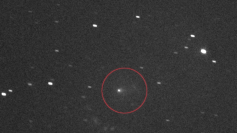In a landmark decision, the Beijing Internet Court has delivered a first-instance judgment in China's inaugural case involving copyright infringement of an AI-generated image, setting a precedent for the burgeoning field of AI-generated content. The case, which revolved around an image titled "Spring Breeze Brings Gentleness," generated by the plaintiff using open-source software Stable Diffusion, has sparked significant discourse on the nature of creation and authorship in the AI era.
The court ruled that the image constitutes a work of art, as it embodies an intellectual achievement reflective of the plaintiff's personalized expression. The judgment emphasized the involvement of the plaintiff in conceptualizing and finalizing the image, thereby attributing the creative input to the human user rather than the AI model. The ruling effectively demarcated the role of AI as a tool in the creative process, rather than an independent entity capable of authorship.
Despite the court's clear stance, the case has ignited a broader debate on the protection of AI-generated content. Some experts argue that AI-generated works inherently lack originality and should not be entitled to copyright. You Yunting, a senior partner at Shanghai Dabang Law Firm, suggests that the plaintiff's use of prompt words to generate the image constitutes indirect creation, akin to providing consultation or auxiliary work, rather than direct intellectual activity.
This case also highlights the complexities of applying traditional copyright laws to AI-generated content. While the court's decision acknowledges the originality of AI-generated images, it raises questions about the consistency and uniqueness of expressions produced by different AI software using the same input. The judgment's implication that multiple AI-generated works stemming from the same expression could all be protected under copyright introduces a potential paradox in the legal understanding of AI-generated creativity.
Despite these complexities, industry insiders recognize the judgment's positive implications, legally recognizing the originality of AI-generated content (AIGC) works and the right to claim damages for infringement. This acknowledgment is crucial for the evolving landscape of generative AI, where companies are increasingly harnessing AI's capabilities to produce text, images, and videos.
However, the judgment does little to address the underlying industry chaos, such as the disregard for the rights of original authors of training data and the low-cost generation leading to price wars. The opaque nature of AI model training further complicates matters, making it challenging to prove infringement.
As AI continues to redefine the creative landscape, the Beijing Internet Court's judgment serves as an important step in shaping the legal framework for AI-generated content. It provides valuable insights into the interpretation of creativity in the age of AI, even as many countries are still grappling with how to regulate this emerging technology. The case is a testament to the legal system's efforts to keep pace with technological advancements and underscores the ongoing dialogue between law, technology, and creativity.





